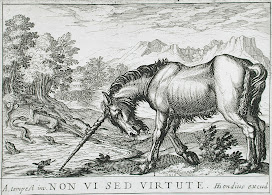The history of the unicorn
The unicorn,
a mythical creature popularized in European folklore, has captivated the human
imagination for over 2,000 years. For most of that time, well into the Middle
Ages, people also believed them to be real. The roots of the unicorn myth date
back at least as far as 400 BCE, when the Greek historian Ctesias first
documented a unicorn-like animal in his writings on the region of India.
Descriptions of the unicorn can be traced throughout the following centuries in
the writings of other prominent historical figures, such as Aristotle, Pliny
the Elder, and even Julius Caesar, who claimed that similar animals could be
found in the ancient and vast Hercynian Forest of Germany.
These early
accounts describe the unicorn as ferocious, swift, and impossible to capture,
with a magical horn capable of healing numerous ailments. Over time, the
unicorn acquired additional significance as a symbol of purity, protection, and medieval chivalry. It even developed religious connotations,
sometimes employed as an allegory for Christ. During the Middle Ages, unicorn
imagery and descriptions were commonly included in medieval bestiaries, and the
unicorn became a popular motif in medieval art. Perhaps the most famous example
is “The Unicorn Tapestries,” currently housed at the Metropolitan Museum of
Art's Cloisters in New York City. Today, the unicorn can still be found everywhere
(and nowhere): it remains a ubiquitous symbol that pervades popular culture from children's movies to Silicon Valley
slang for start-ups valued at over one billion dollars. Though we may no longer
believe in the existence of unicorns, the unicorn myth remains very much alive
and well.



No comments:
Post a Comment